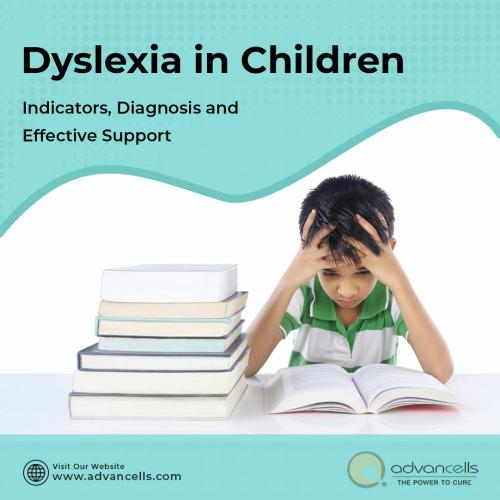Unraveling the Enigma: Exploring the Causes of Alzheimer's Disease

Alzheimer's disease, a progressive neurodegenerative disorder, has become one of the greatest challenges in healthcare and research. With its devastating impact on memory, cognition, and daily functioning, understanding the causes of Alzheimer's is crucial for developing effective treatments and prevention strategies. While the exact mechanisms remain complex and multifaceted, significant progress has been made in unraveling the enigmatic causes of this debilitating disease. In this long-form article, we will delve into the leading factors contributing to Alzheimer's disease and shed light on the current state of research in this field.
Genetic Predisposition: The Role of Heredity
Genetics plays a significant role in the development of Alzheimer's disease. In rare cases, familial Alzheimer's disease (FAD) can be attributed to specific gene mutations inherited from one or both parents. Mutations in three genes, namely APP, PSEN1, and PSEN2, are known to cause early-onset familial Alzheimer's. These mutations result in the overproduction of a protein called amyloid-beta, leading to the formation of plaques in the brain—a hallmark of Alzheimer's disease.
On the other hand, the most common form of Alzheimer's is late-onset, which typically occurs after the age of 65. The apolipoprotein E (APOE) gene, specifically the APOE ε4 allele, is considered a risk factor for late-onset Alzheimer's. Individuals carrying one copy of the APOE ε4 allele have an increased risk, while those with two copies face an even higher risk of developing the disease. However, it's important to note that having the APOE ε4 allele does not guarantee the development of Alzheimer's, and many individuals without the allele still develop the disease.
Amyloid-Beta and Tau: The Pathological Culprits
The accumulation of abnormal proteins in the brain is a defining characteristic of Alzheimer's disease. Two key proteins, amyloid-beta, and tau, are believed to play central roles in the disease process.
Amyloid-beta is produced from the breakdown of a larger protein called amyloid precursor protein (APP). In Alzheimer's patients, amyloid-beta accumulates and forms plaques between neurons, disrupting communication and leading to neurotoxicity. These plaques trigger an inflammatory response and contribute to neuronal damage and cognitive decline.
Tau, on the other hand, is a protein involved in stabilizing the structure of neuronal cells. In Alzheimer's disease, tau proteins undergo abnormal modifications, leading to the formation of neurofibrillary tangles within neurons. These tangles disrupt the transport of essential nutrients and other molecules, ultimately leading to neuronal dysfunction and cell death.
Oxidative Stress and Neuroinflammation: The Inflammatory Puzzle
Emerging research suggests that chronic inflammation and oxidative stress within the brain may contribute to the development and progression of Alzheimer's disease. Oxidative stress occurs when there is an imbalance between the production of reactive oxygen species (ROS) and the body's antioxidant defences. ROS can damage cells, including neurons, and promote the formation of amyloid-beta plaques.
Neuroinflammation, characterized by the activation of immune cells in the brain, is also a significant contributor to Alzheimer's disease. When activated, immune cells release pro-inflammatory molecules that can damage neurons and contribute to the formation of plaques and tangles.
Vascular Factors: The Brain-Blood Connection
Mounting evidence suggests a strong link between cardiovascular health and Alzheimer's disease. Vascular risk factors, such as high blood pressure, high cholesterol levels, diabetes, and obesity, have been associated with an increased risk of developing Alzheimer's.
Impaired blood flow to the brain can lead to a cascade of events, including reduced nutrient supply, compromised waste clearance, and increased oxidative stress. These factors contribute to neuronal damage and the accumulation of amyloid-beta and tau proteins.
Environmental and Lifestyle Factors: Unraveling the Complex Web
While genetics and biological factors play a significant role in Alzheimer's disease, environmental and lifestyle factors also contribute to its development. Several factors have been identified as potential risk factors:
Age: Advancing age is the most significant risk factor for Alzheimer's disease. As the population ages, the prevalence of Alzheimer's is expected to increase.
Education and Cognitive Engagement: Higher levels of education and engaging in mentally stimulating activities throughout life have been associated with a reduced risk of developing Alzheimer's disease.
Diet and Exercise: A healthy lifestyle, including a balanced diet rich in fruits, vegetables, whole grains, and omega-3 fatty acids, along with regular physical exercise, may help lower the risk of Alzheimer's.
Head Trauma: Severe or repeated head injuries, such as those experienced in contact sports or accidents, have been linked to an increased risk of Alzheimer's disease later in life.
Conclusion
Alzheimer's disease remains a complex puzzle with multiple interconnected factors contributing to its development. Genetic predisposition, amyloid-beta and tau pathology, oxidative stress, neuroinflammation, vascular factors, and environmental/lifestyle factors all play significant roles in the disease process. Understanding these causes and their interactions is crucial for developing targeted interventions, such as disease-modifying treatments and preventive strategies.
As researchers continue to unravel the intricacies of Alzheimer's, advancements in technology, genetics, and therapeutics provide hope for a future where we can mitigate the devastating impact of this disease. Until then, raising awareness, supporting research efforts, and promoting brain-healthy lifestyles remain important avenues for combating Alzheimer's and improving the quality of life for individuals affected by this challenging condition.








Comments